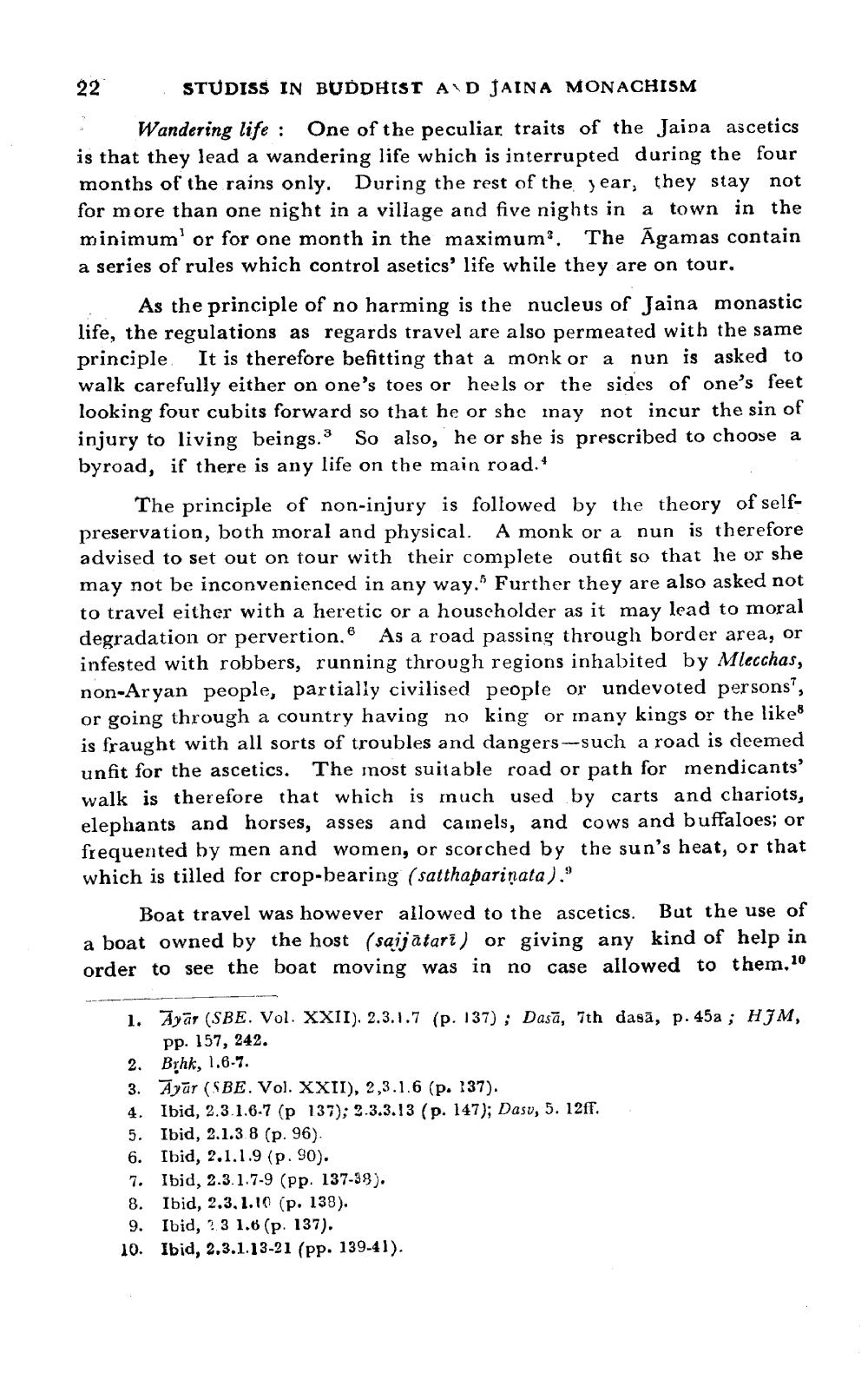________________
22 STUDISS IN BUDDHIST A D JAINA MONACHISM
Wandering life : One of the peculiar traits of the Jaina ascetics is that they lead a wandering life which is interrupted during the four months of the rains only. During the rest of the year, they stay not for more than one night in a village and five nights in a town in the minimum' or for one month in the maximum. The Agamas contain a series of rules which control asetics' life while they are on tour.
As the principle of no harming is the nucleus of Jaina monastic life, the regulations as regards travel are also permeated with the same principle. It is therefore befitting that a monk or a nun is asked to walk carefully either on one's toes or heels or the sides of one's feet looking four cubits forward so that he or she inay not incur the sin of injury to living beings. So also, he or she is prescribed to choose a byroad, if there is any life on the main road.*
The principle of non-injury is followed by the theory of selfpreservation, both moral and physical. A monk or a nun is therefore advised to set out on tour with their complete outfit so that he or she may not be inconvenienced in any way.” Further they are also asked not to travel either with a heretic or a householder as it may lead to moral degradation or pervertion. As a road passing through border area, or infested with robbers, running through regions inhabited by Mlecchas, non-Aryan people, partially civilised people or undevoted persons", or going through a country having no king or many kings or the likes is fraught with all sorts of troubles and dangers ---such a road is deemed unfit for the ascetics. The most suitable road or path for mendicants' walk is therefore that which is much used by carts and chariots, elephants and horses, asses and camels, and cows and buffaloes; or frequented by men and women, or scorched by the sun's heat, or that which is tilled for crop-bearing (satthaparinata)."
Boat travel was however allowed to the ascetics. But the use of a boat owned by the host (saijatari) or giving any kind of help in order to see the boat moving was in no case allowed to them.10
1. Ayar (SBE. Vol. XXII). 2.3.1.7 (p. 137); Dasā, 7th dasā, p. 45a ; HJM,
pp. 157, 242. 2. Brhk, 1.6-7. 3. Ayar (SBE. Vol. XXII), 2,3.1.6 (p. 37). 4. Ibid, 2.3.1.6-7 (p 137); 2.3.3.13 (p. 147); Dasv, 5. 12fT. 5. Ibid, 2.1.3 8 (p. 96). 6. Ibid, 2.1.1.9 (p. 90). 7. Ibid, 2.3.1.7-9 (pp. 137-39). 8. Ibid, 2.3, 1.10 (p. 138). 9. Ibid,? 3 1.6 (p. 137). 10. Ibid, 2.3.1.13-21 (pp. 139-41).




